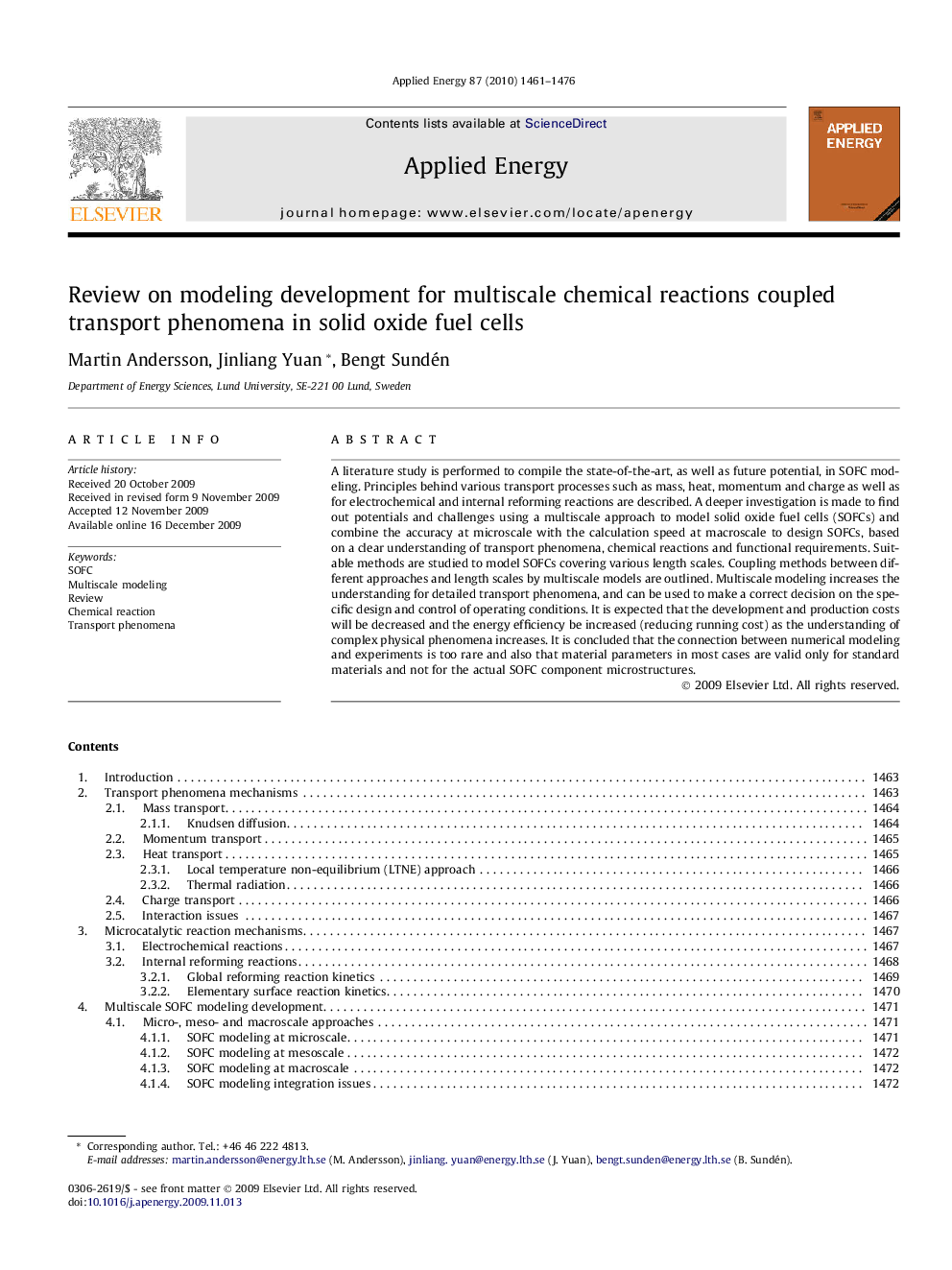| Article ID | Journal | Published Year | Pages | File Type |
|---|---|---|---|---|
| 244460 | Applied Energy | 2010 | 16 Pages |
A literature study is performed to compile the state-of-the-art, as well as future potential, in SOFC modeling. Principles behind various transport processes such as mass, heat, momentum and charge as well as for electrochemical and internal reforming reactions are described. A deeper investigation is made to find out potentials and challenges using a multiscale approach to model solid oxide fuel cells (SOFCs) and combine the accuracy at microscale with the calculation speed at macroscale to design SOFCs, based on a clear understanding of transport phenomena, chemical reactions and functional requirements. Suitable methods are studied to model SOFCs covering various length scales. Coupling methods between different approaches and length scales by multiscale models are outlined. Multiscale modeling increases the understanding for detailed transport phenomena, and can be used to make a correct decision on the specific design and control of operating conditions. It is expected that the development and production costs will be decreased and the energy efficiency be increased (reducing running cost) as the understanding of complex physical phenomena increases. It is concluded that the connection between numerical modeling and experiments is too rare and also that material parameters in most cases are valid only for standard materials and not for the actual SOFC component microstructures.
